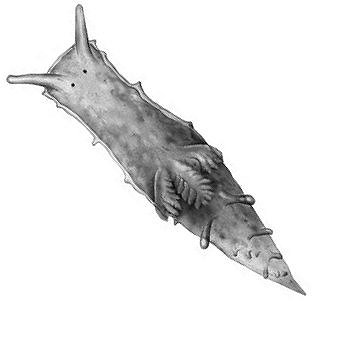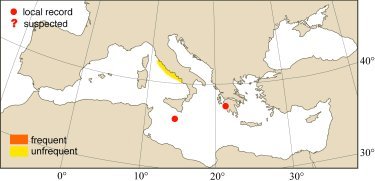
|
Relevant Synonyms
Misidentification
|
|
| drawing: Tuvia Kurz |
|
SHORT
DESCRIPTION
color :
cryptic coloration. General body color translucent yellowish, sprinkled with small dark brown dots on the back, upper sides of foot and tail, and with minute opaque white or yellowish-green spots on rhinophores, gills, back, upper sides of foot and tail.
common size :
up to 5 mm. |
DISTINGUISHING CHARACTERISTICS
BIOLOGY / ECOLOGY
habitat :
under rocks, in crevices and walls 1-2 m deep, where colonies of the bryozoan Zoobotryon verticillatum are present. In the western Atlantic it is a common species in fouling communities (Clark, 1975). |
|
1st
Mediterranean record
|

|
|
DISTRIBUTION
|
ESTABLISHMENT SUCCESS
speculated reasons for success :
|
|
|
MODE OF
INTRODUCTION |
IMPORTANCE TO
HUMANS |
|
KEY
REFERENCES
|
|
|
 Polycerella recondita [Schmekel, 1965]
Polycerella recondita [Schmekel, 1965]